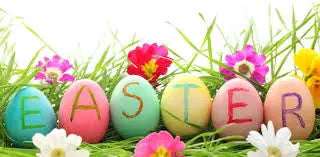Always one to help a fellow writer out, I occasionally feature blog posts written by guest bloggers. This one is quite informative, and discusses interesting aspects about Easter Sunday. I hope you enjoy it.

Easter is almost upon us and throughout the world, just like Christmas, Easter these days is commonly considered a time to be spent with family or your nearest and dearest.
We often don’t give any consideration to where the traditions, that have been carried along from generation to generation, originated from – we just go along with them, not knowing how or where they began…

Easter traditionally commemorates the resurrection of Jesus Christ, which is thought to have taken place around 33 AD and Easter festivals and feasts are believed to have begun during the 2nd Century.
During Medieval times, Easter was a prominent celebration where feasting, combined with music, dance and the consumption of alcohol would take place. These feasts could sometimes go on for days, similar to a Christmas celebration!
Many Easter traditions have been around for centuries but have evolved over time. It was only during the 19th century that Easter really became considered to be a time to spend with family…
Easter Sunday, for many Christians, begins with a sunrise service at church. It is believed that it was dawn when the tomb of Jesus was discovered to be empty and this is why the service is held at sunrise. It is thought to have been started in the 1700’s by the Moravians.

One of the main symbols of Easter is the Easter bunny, which is thought to have originated from the Pagans and then been brought over to America by German immigrants in the 1700’s, whilst the tradition of decorating eggs is thought to date back as far as the 13th century. The Easter parade tradition is thought to date back even further than this!
Following on with the egg theme, the Easter egg hunt is another tradition which is believed to have originated from Pagan festivals that celebrated fertility. Easter egg hunts (typically aimed at children, although I have to say, I rather still enjoy them myself!) involve eggs being hidden by the Easter bunny. Typically chocolate eggs are hidden, but they can also be eggs filled with candies and even hard-boiled eggs can be used (although I’m not sure if children would love the hunt as much with hard-boiled eggs being used!). The children go hunting for the eggs which they then put into their Easter egg basket and devour later! Kids tend to make a bit of a mess during all of the fun so keeping the house clean will be difficult to say the least! Eggs are also part of the tradition because they were banned during the period of lent in Medieval Europe which resulted in them often being eaten over the Easter period when the fasting had ended.

The tradition of consuming hot cross buns over the Easter period is thought to have begun with a monk during the 12th century, who decided to add the cross shape to the top of them in celebration of Good Friday.
Chocolate eggs – probably one of the most typical symbols of Easter these days – originated in France and Germany in the 19th century and then became popular throughout the rest of Europe and then the United States, where today, consuming copious amounts of chocolate seems to be the main family activity at Easter time… At least in my household!

